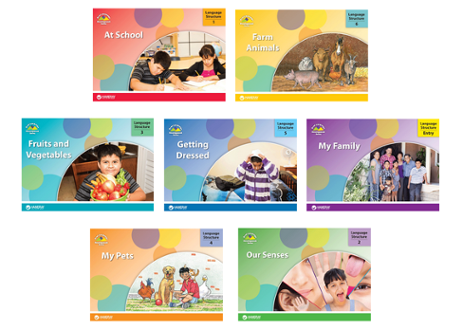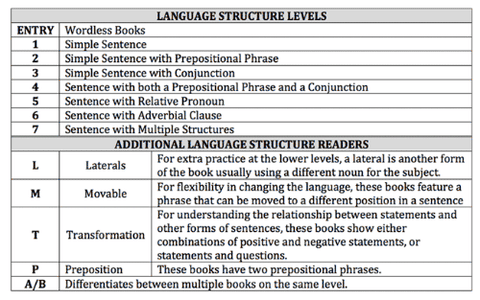
This is a guest blog post by Bee Medders, program consultant at the New Teacher Center. It originally appeared on the New Teacher Center website .
How can teachers accelerate student learning? One way is to determine what is impeding movement and addressing those needs. That is exactly what one teacher did to get her students who were stuck at a reading level to make rapid progress.
A first grade teacher, who served as a lab teacher as part of the New Teacher Center professional development series, Foundations in Language and Literacy, asked “What else can I do to move my students?" It was almost the end of February and eight of her students were not moving like the rest of the class most of whom were English Language Learners. It seemed they had reached a point where they were stuck. The teacher in this case study is a veteran teacher of 23 years and had been implementing high impact practices on a daily basis. She does Read Aloud, Shared Reading, Guided Reading, Independent Reading, and Writer’s Workshop. In addition, she uses many strategies that support English Language Learners such as music and Total Physical Response. Many of her students often moved quite rapidly and would exceed grade level expectations before midyear. Even with extra support from the reading intervention teachers and additional support after school, the students were not accelerating. What was impeding their movement?
Based on the understanding and research that oral language is the foundation for reading and writing, the teacher and I started to address the challenge by assessing the language structure the students can control. We used as a language measure Lance Gentiles’ Oral Language Acquisition Inventory (OLAI). In addition, we used a wordless book from the Language Readers series as an assessment tool and the Oral Language Assessment Toolkit (OLAT) available on this website and an app for iPad (OLAT). ( For information about the Language Readers, click on the Instructional Practice tab.) We had students tell what is happening on each page and recorded word for word what students said. Then, we analyzed the oral language record (OLR) for language structure. We noticed students were able to produce labels, short phrases, and some simple sentences while books at the higher reading levels had much more complex language structures the students could not hold yet in their oral language. The OLAI measure confirmed the level of sentence structure the students controlled.

To build the students’ language structures, we began using the Language Readers created by a team of NTC Mentors and NTC Consultant Dr. Adria Klein. The Language Readers were designed to develop oral language through interaction with text. Although they are called readers, the focus is on oral production rather than accurate reading. Based on our assessment, the teacher started with a book with a Language Structure Level 1 – Simple Sentence. First, she modeled the language structure by reading the text to the students, much like a Read Aloud. Then, she would read again and this time the students repeated after she read each page. Next, she moved to guided where the students “read” the book while she listened for language production and supported the students language development as needed.
Unlike Guided Reading where the teacher is focused on teaching for reading strategies, the teacher had to listen to assess if students were able to hold on to the structure. This was the shift in practice the teacher had to make and be mindful of when developing oral language. Finally, the students were given independent practice. Her school had a set of 4 books for each Language Structure Level so she had students keep the books in their book bags for Independent Reading time. The teacher provided many opportunities for oral rehearsals before students were expected to use the structure when decoding the written language. Before, students had only meaning and visual to rely on to decode. Now, students also had structure to cross check with meaning and visual to support their read effectively including during independent reading.

In addition to repeated exposure to the language structures and oral rehearsals, the teacher had the students writing sentences as they moved across the levels using the same structures from the books. For example, in the series My Family, Language Structure 2 book, simple sentence with prepositional phrase it says, “My dad is cooking in the kitchen. Students could write about their families, what they do, and add prepositional phrases in their sentences. It allowed students to see what they say they can write. And, what they write, they can read. Learning the sight words and phonics were all in context of using language to communicate, and therefore became much more meaningful and purposeful. Writing and reading their own sentences helped to solidify that specific structure in their oral language.
Everyday during small group instruction, the teacher focused on oral language development rather than only reading text. When students could hold on to Level 1, she moved students to a reader with Language Structure Level 2 – Simple Sentence with Prepositional Phrase and then to Level 3 - Simple Sentence with Conjunction. By the third week, she had students on Level 4 - Combination of sentences with Prepositional Phrase and Conjunction. This experience reminds me of driving through a construction site. When the structures being built are completed, it moves from bumpy to smooth driving.
After two and half weeks of focusing on developing their oral language, the teacher decided to go back to doing more traditional Guided Reading. When she gave them a book at the level previous to using the Language Readers, the students told her the books were too easy. When she took a running record, all eight of her students had moved levels. The teacher shared she also noticed students seemed more confident. We believe it is because the students experienced success in reading the books that they saw themselves as readers. Before the year ended, all but three reached grade level expectations. Students who entered reading below grade level, Levels A-3, reached proficiency by the end of first grade, Level 16 and up. One of the students, who arrived in January from China, however did make significant growth. She came as a non-English speaker reading at Level A and ended at Level 8. We wondered if given a few more months, would she have maintained the rate of acceleration and reach end-of- the-year grade level expectations? Two of the students who did not meet the end-of-the year grade level expectations have a family history of learning disabilities and need further evaluation to determine possible additional support. Nevertheless, we were pleased to see they moved from Level 4 to Level 6 in two and a half weeks. We hope to continue building on what we have learned and move students who get stuck.
So, if students are not accelerating in reading and writing, perhaps it’s the oral language that needs to be addressed. Having students talk and listening for the language structures they control is informative assessment in determining instructional moves that can accelerate student learning. This case study showed what’s possible. I thank the lab teacher for sharing this journey with me and allowing others to read about it!
For more information on the language readers in the Oral Language Development Series, click here to visit our website , or click the images below to download a series information sheet, teacher's guide, and sampler.














































![6 Fun and Easy Activities to Practice Sequencing [Grades K-1]](http://www.hameraypublishing.com/cdn/shop/articles/Red_Typographic_Announcement_Twitter_Post-5_bf1ae163-a998-4503-aa03-555b038d1b76_600x.png?v=1689961568)
![Leveraging Prior Knowledge Before Writing and Reading Practice [Grades 1–2]](http://www.hameraypublishing.com/cdn/shop/articles/Red_Typographic_Announcement_Twitter_Post-4_600x.png?v=1689961965)




